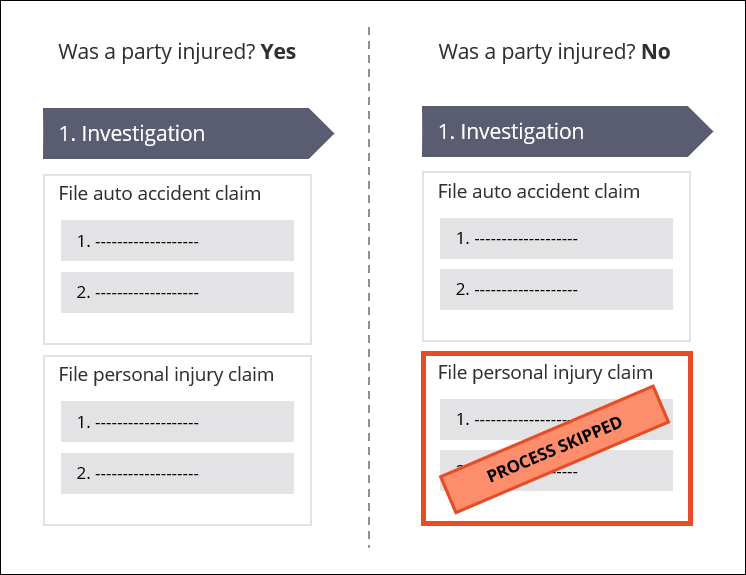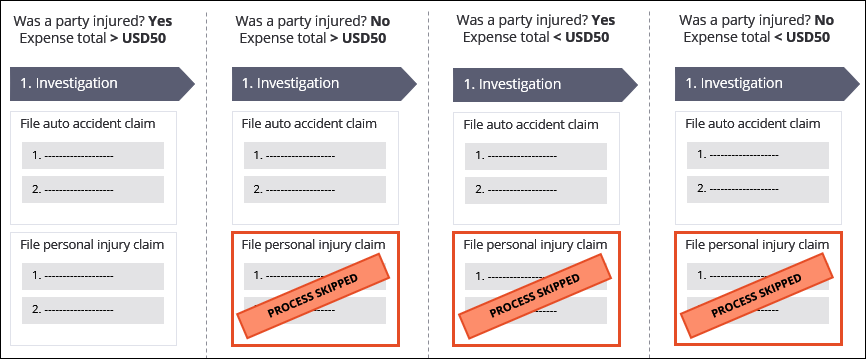
Conditional execution of processes and stages
Conditional execution
You can define conditions that control whether a process or stage runs in a case. A condition consists of a field, comparator, and value. Processes and stages are either executed or skipped if the case run-time values match the conditional logic defined.
In the following image, click the + icons to learn more about configuring a condition to skip a process or stage.
For example, an automobile accident case contains a process to open a personal injury claim if there is an injured party in the accident. However, if the car received damage while parked and unattended, the personal injury process can be skipped. The File auto accident claim process always runs, which is the default setting for processes. The File personal injury claim process is configured with a condition: Was a party injured is equal to Yes. As a result, the File personal injury claim runs only when there is a personal injury associated with the accident claim. Otherwise, the process is skipped.
Skipping a process or stage
Skipping a stage
In the case life cycle, select the stage of interest to configure a condition to skip a stage. By default, a stage never skips unless a condition is present.
Skipping a process
In the case life cycle, select the process of interest to configure a condition to start a process. By default, a process always starts unless a condition is present.
Building conditions
You can add more than one condition to a stage or process. For example, in the automobile accident case, the personal injury process initially runs based on a single condition: Was a party injured is equal to Yes. You decide that the personal injury process should run based on two conditions: Was a party injured is equal to Yes and Expense total is greater than USD50. The File personal injury claim process is configured only to run when Was a party injured is Yes, meaning there is a personal injury associated with the accident claim, and the Expense total is greater than USD50. Otherwise, the process is skipped.
Check your knowledge with the following interaction
This Topic is available in the following Module:
If you are having problems with your training, please review the Pega Academy Support FAQs.
Want to help us improve this content?



